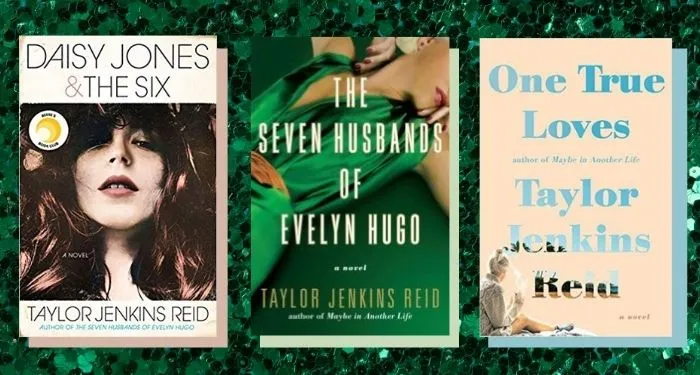For Authors
Any author who has attempted to take on a beloved character or iconic franchise knows they’ll face intense pressure from existing fans to “get it right.” Perhaps no one understands this better than James Gunn, tasked recently with breathing fresh excitement into a superhero that’s been flying for nearly a century. Yet critics and audiences agree he has wildly succeeded in revitalizing Superman, transforming a familiar character into something vibrant and compellingly new.
This week, Ginger explores exactly how Gunn pulled off this storytelling feat. Gunn’s Superman provides authors with a playbook filled with techniques worth studying, from plunging audiences straight into thrilling action to creating an ensemble cast that feels instantly authentic. His thoughtful, innovative approach proves that even the most well-worn tales can be turned into captivating narratives, offering valuable lessons authors can use to supercharge their own stories.
A couple of weeks ago I wrote an article about the incredible pressure authors like Charlie Higson and Kim Sherwood must face when writing a new James Bond book, because they’re tasked with forging a new and exciting path on what is now a very well-trodden trail.
This weekend, I watched the brand-new Superman movie in the cinemas, and realized that writer and director James Gunn had faced exactly the same kind of challenge. This tentpole summer blockbuster reboot, starring David Corenswet as the Man of Steel, immediately had critics raving about how good it was with an 82% on Rotten Tomatoes and an A- CinemaScore.
And audiences seemed to agree! Superman raked in $217 million globally during its opening weekend, the third-best debut of 2025, soaring past Lilo & Stitch’s $14.5 million preview haul and even outpacing Gunn’s own Guardians of the Galaxy Vol. 3.
But beyond the numbers, this film did what James Bond authors are tasked with, when they get asked to write a new book about Britain’s most-written-about secret agent. The movie breathed fresh life into a character who’s been around for nearly a century.
How did James Gunn do it so successfully? And what can we writers steal from his playbook? Let’s dive in, because I truly believe this movie’s script is a masterclass in storytelling.
The Challenge of Reinventing a Legend
I wrote about the challenge of writing a new James Bond book, but writing a new Superman movie in 2025 is an equally intimidating challenge—perhaps even more so, just because of how fresh the last incarnation of Kal-El is in our collective memories.
The last solo outing for Superman was Zack Snyder’s Man of Steel (2013), which is just 12 years ago. That film grossed $668 million worldwide, and established what was to become Warner Brother’s answer to Marvel’s highly successful “cinematic universe.”
And despite the rocky road that franchise took, people seemed to love Superman from this universe! Henry Cavill’s brooding, godlike Man of Steel practically defined the DC Extended Universe (DCEU), and went on to appear in Batman v Superman: Dawn of Justice (2016) and Justice League (2017). Cavill’s return just a few years ago in Black Adam (2022) had us fans buzzing for more—but it was not to be.
The DC Extended Universe had never enjoyed the consistent critical and commercial successes that Marvel had up to that point. Like a broken rollercoaster, the franchise kept stalling mid-loop. Zack Snyder’s initial dark, brooding vision in Man of Steel and Batman v Superman quickly clashed with the campy humor of Aquaman and Joss Whedon’s chaotic, quip-heavy Justice League, leaving us fans and the critics dizzy. Yes, there were undeniable hits like Aquaman and Wonder Woman (2017), but also flops like The Flash (2023) and the Aquaman sequel The Lost Kingdom (2023), which ended up earning just $439 million against a $200 million budget.
By 2022, a year before the “end” of the DCEU, Warner Brothers were desperate for a reset. That was when they had a superhero of their own swoop in to save them: Marvel’s golden-boy James Gunn, who was fresh off The Suicide Squad (2021) and Peacemaker series (2022).
Hired alongside producer Peter Safran as co-CEO of DC Studios in November 2022, Gunn was tasked with rebooting the franchise into the new DC Universe (DCU), leveraging his knack for blending heart, humor, and bold storytelling to steady the ship.
And so, just days after our last official sighting of Superman, James Gunn and DC Studios co-CEO Peter Safran announced that they’d scrapped plans for a “soft reboot” of the DC Universe and were going to create something utterly brand-new.
Although I enjoyed a lot of the DCEU movies, and was a big fan of Henry Cavill and Ben Affleck in their iconic roles, watching the new Superman movie this weekend confirmed to me that this was the right creative direction to take.
That being said, I didn’t envy James Gunn when he made that decision. Not only did he incur the wrath of Zack Snyder fans, who demanded that Warner Brothers “restore the Snyderverse.” He also faced the daunting task of reintroducing an icon while distancing himself from the Snyderverse shadow, all without alienating fans who saw Cavill as the quintessential Superman.
But then, this weekend, we saw how he managed to pull it off.
Superman’s Storied Past
Before we discuss what made James Gunn’s new Superman movie so successful, it’s worth talking about the character and legacy of the Superman character.
It’s difficult to believe, but Superman was initially created way back in 1938 by Jewish writers Jerry Siegel and Joe Shuster, who saw him as a beacon of hope during the Great Depression.
Right from the get-go, Superman embodied the immigrant experience. Born as Kal-El, a Kryptonian from a distant planet, he was raised as Clark Kent in America by wholesome, corn-fed Kansas farmers Martha and John. He was meant to embody “truth, justice, and the American Way” back when the “American Way” didn’t involve quite so much carpet bombing and regime change.
His initial comic book adventures soon inspired radio serials, beginning with The Adventures of Superman which ran from 1940 to 1951 as a syndicated series that introduced elements like Kryptonite and Perry White, captivating listeners with serialized heroics.
On television, Superman debuted with Adventures of Superman in 1952, starring George Reeves and blending campy charm with moral tales.
The 1978 film Superman: The Movie, with Christopher Reeve, set a cinematic gold standard, grossing $300 million and spawning three sequels (including a goofy third installment that emotionally scarred me as a child when Lex Luthor’s sister got consumed by an evil computer.)
Clark’s TV adventures continued with Lois & Clark: The New Adventures of Superman in 1993, which focused more on romance than saving the world. Later came Smallville in 2001, which was a teen drama exploring Clark Kent’s origins in his Kansas hometown, and ran for an astonishing ten years.
Meanwhile, animated hits like Superman: The Animated Series (1996–2000) kept the spirit alive for a younger audience, and matched the tone of Batman: The Animated Series, which is often cited as the definitive incarnation of Batman.
Then the DC Extended Universe (DCEU) arrived, introducing Henry Cavill in Man of Steel. Right from the get-go, however, the darker tone of the DCEU divided fans, especially a controversial scene in the climax of the first movie, in which Superman kills the genocidal General Zod, which many fans claim is totally out-of-character for Superman.
Whichever way you look at it, though, Superman has been around for even longer than James Bond, and in far more mediums of entertainment. From comic books to radio’s crackling adventures, exploring TV’s small-town heart and cinema’s soaring spectacle, Superman’s journey reflects his timeless appeal and presents an intimidating challenge for any creative person trying to keep the character going.
A Fresh, Invigorating Take
But as challenging as that was, James Gunn’s Superman provided a vibrant jolt to the franchise.
Critics call it “colorful, earnest, emotionally rich” and a “return to the optimism of the Christopher Reeve era”. Unlike the Snyderverse’s gloom, the film crackles with hope, humor, and humanity throughout every moment of its runtime, launching the new DCU with a bright, wholesome bang. It’s not just a new Superman, it’s a new blueprint for DC’s cinematic future, proving you can honor a character’s roots while making them feel brand-new.
Here’s where I think Gunn’s script offers a treasure trove of lessons for authors looking to make their own mark.
Drop Readers into the Action
There are some tropes in superhero movies that we don’t need to see regurgitated for the umteenth time. Like Bruce Wayne’s parents being shot in an alleyway, Peter Parker getting bitten by a radioactive spider, or Kal-El emerging as a baby from his Kryptonian escape pod. Those have all been done countless times before (to the point that the pearls bouncing across the cobblestones in Batman’s origin story has become a meme.)
So James Gunn did things differently. Right from the opening frame, Superman throws you into utter chaos and uncertainty instead—mid-way through a monster attack on Metropolis, with Corenswet’s Superman bruised but unbowed.
Instead of retelling Kal-El’s origin, Gunn uses title cards to flash his Kryptonian backstory, trusting the audience to know the basics. It’s a bold move that hooks you instantly, like diving into a novel mid-scene.
But it’s also a great move, and one that I think many authors can emulate. Skip the slow buildup! Start with a punch! Throw your hero right into a fight, a betrayal, or a mystery and weave the backstory in subtly a little later on. Readers will thank you for respecting their intelligence.
World-Building Through Ensemble
Just like we get thrown right into the story, Gunn also introduces DC heroes like Hawkgirl (Isabela Merced), Guy Gardner (Nathan Fillion), and Mister Terrific (Edi Gathegi) without needing standalone films to set them up first. This “Justice Gang” adds depth to Metropolis, showing a world where “metahumans” are commonplace.
It’s very different to Marvel’s phased approach or the DCEU’s rushed movies that proceeded Justice League. Gunn’s immediate ensemble feels organic, with each character enriching the story without needing an origin story of their own.
Authors can mimic this approach by populating their own worlds with vivid secondary characters who hint at a larger universe, but don’t require reading a whole book to get familiar with first. Whether it’s a rogue spy, a quirky mentor, or a rival—these characters can do the heavy lifting of world-building without starring in their own 500-page epic.
Humor as a Tonal Anchor
If there’s one criticism of the Snyderverse I agree with, it’s that it was dour. Cavill’s Superman rarely smiled, and even Justice League’s Joss Whedon cut felt jarringly quippy. In fact, when YouTube channel Screen Crush tried to highlight a joke from Man of Steel to compare to the tone of the new movie, they couldn’t even find a single one!
Gunn flips this, making humor a cornerstone of the new DCU. Corenswet’s Clark mutters “Golly” after a beating, and Fillion’s Green Lantern delivers laugh-out-loud moments with his ring’s antics. Unlike the DCEU’s tonal whiplash (think Aquaman’s camp versus The Flash’s chaos), Gunn’s consistent “punk rock” humor sets a clear vibe. For authors, this is a reminder to pick a tone and stick to it. If your thriller has snark, let it shine through every chapter, not just when it’s convenient.
Metaphors for Real-World Issues
A new superhero movie inevitably means a new outrage about it being “woke” and Superman is no exception. James Gunn unashamedly weaves painfully contemporary issues into the plot, yet manages to do so without preaching. Superman intervenes in a fictional war between Boravia and Jarhanpur, echoing tensions like Russia-Ukraine or Israel-Gaza, and draws global criticism for acting without authority.
Meanwhile, Lex Luthor’s (Nicholas Hoult) schemes involve drones, nanite-enhanced goons, and social media smear campaigns, mirroring modern technology’s dark side.
There’s even a subplot about imprisoning metahumans outside Earth’s legal system, which feels like a nod to extrajudicial detention occurring in America today.
Yet despite all this, the film stays escapist, letting fiction process reality. Authors can do the same. Use your dystopia or fantasy to reflect real struggles, but keep it subtle so readers stay immersed and feel comfortable questioning their political beliefs without having them directly challenged.
A Human Hero
One of the things I loved most about Gunn’s Superman is that he’s flawed—unsure, angry, and prone to mistakes, unlike Cavill’s near-divine portrayal.
This is perhaps the biggest challenge any writer faces when tackling Superman as a main character, because he is literally “perfect.” Invulnerable, incorruptible, and invincible. A very boring mainstay considering that stories are built on conflict!
But Corenswet’s Clark, at just 25, grapples with real world problems. He has to address his love for Lois Lane (Rachel Brosnahan) and his friendship with other superheroes who call him hopelessly naive. His “gosh” and love for “bland pop-punk” make him relatable, not alien. At the end of the movie, it’s his humanity which allows him to triumph, not his Kryptonian superpowers.
Authors should take note! Readers connect much more strongly with imperfect heroes. Your protagonist’s doubts or temper can make them feel like a friend, not a statue.
Loyalty to Source Material
Another great creative decision was to pull stories and characters from classic comics, like Superman: For Tomorrow (2004) for Lex’s manipulation and All-Star Superman (2006) for Clark’s optimism. Krypto the Superdog, modeled after Gunn’s own dog, echoes his chaotic charm from Superman #680 (2008).
(And, yes, I had to Google all this. I’m not that much of a comic book nerd.)
But this fidelity delights both casual fans like myself, and the really dedicated comic book crew, much like Marvel’s Iron Man (2008) or Harry Potter films found success by sticking to their roots.
For authors, staying true to your genre’s tropes, whether it’s a detective’s grit or the inevitable HEA at the end of a romance novel, builds trust with readers who crave familiarity.
Hope in Dark Times
Finally, and perhaps most importantly, Gunn’s Superman is bright, colorful, wild, wacky, and romantic—a stark contrast to the Snyderverse’s dark color palette and endless gloom.
Clark’s selflessness (even saving a squirrel amid the chaos of a monster attack at one point) embodies hope and kindness in a cynical world.
With real-world conflicts raging all around us, this optimism felt like a balm to me. It filled me with the same hope that Superman is supposed to inspire, and I left the movie theater feeling uplifted.
Authors? Your stories can offer that same escape! Delivering a hopeful ending or a hero’s small victory can lift readers when the news in our real world feels unbearably heavy.
A New Dawn for Tired Tales
James Gunn’s Superman proves you can breathe life into a well-trodden franchise.
Okay, so not EVERYBODY loves it. Some critics have called it “overstuffed” or “mediocre” and some fans of the Snyderverse have literally been protesting its release.
However, the box office performance and fan love on social media show that the new Superman struck a chord.
For self-published authors, this is a rallying cry. Your cozy mystery or sci-fi saga doesn’t need to feel stale. Drop readers into the action, build rich worlds with vibrant characters, keep your tone steady, tackle big issues subtly, and stay true to your roots. Most of all, dare to be hopeful. Your story could be the escape someone needs.
So, what’s your take? Seen Superman yet? How do you plan to inject fresh life into your own writing? Drop your thoughts in the comments, I’d love to hear them!
Share this blog
About the Author

Ginger is also known as Roland Hulme - a digital Don Draper with a Hemingway complex. Under a penname, he's sold 65,000+ copies of his romance novels, and reached more than 320,000 readers through Kindle Unlimited - using his background in marketing, advertising, and social media to reach an ever-expanding audience.



















 English (US) ·
English (US) ·